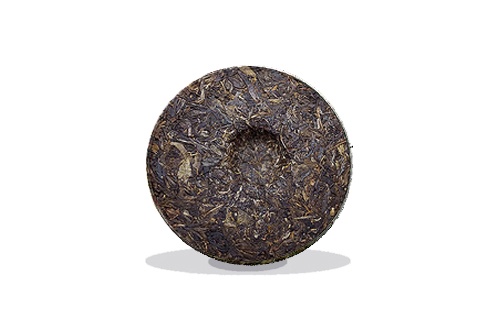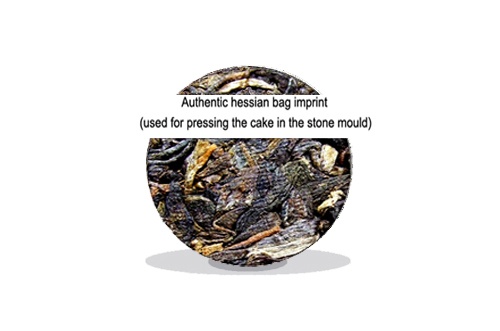2011 ZI YA little Pu erh cake (raw)
China - Jing Gu Town, Puerh county, Yunnan province
Zi Ya means ‘purple bud’. Purple tea is a relatively new variety of tea discovered by a group of researchers from the Yunnan Tea Research Institute who went deep into the forests of Yunnan in 1985 and confirmed the existence of purple tea trees. Research followed the discovery and showed how unique and different the flavours were as compared to the common leaf variety.
Purple tea is rich in anthocyanins which are powerful antioxidants that have amazing health benefits used for preventing cardiovascular and neurological diseases, circulatory disorders, eye problems and protecting the skin from UV damage and improving skin elasticity. Today, purple tea is still rare, but it is popular for it’s health enhancing benefits and it’s intense beautiful aroma.
Zi Ya is from trees of 60 years old, grown on the mountainous slopes around Jing Gu town where the sub tropical climate produces a tea of excellent quality. The buds and first three leaves of Zi Ya are purple, the rest of the leaves are dark green. The purple leaves and bud are hand picked, air dried, pan fried, steamed, then pressed in stone moulds at Chang Yan factory in Puerh town.
The resulting tea has a deep body and is sweet and clean tasting. We suggest that you infuse Zi Ya for a short time to enjoy the fine tea flavour. After 6 or 7 steeps the natural sweetness really comes through.
We recommend using between 5g to 8g per serving. Traditionally the first infusion rinses the tea and is discarded. Pu erh does not require a long infusion time, no more than five seconds for each brewing. Break off pieces from the tea cake using a letter opener or similar shaped knife, before infusing in a Gaiwan or teapot.
This is a superb tea of limited supply and will age well.
- Name:
- 2011 PURPLE BUD (raw)
- Chinese Name:
- 紫芽 ZI YA
- Origin:
- Jing Gu Town, Puerh county, Yunnan province
- Harvest:
- Spring tea, picked before April 2011
- Pressed:
- 2011 - Chang Yan Tea Factory Puerh City
- Picking standard:
- Two leaves and a bud
- Dried tea colour:
- Dark purple that turn green after steeping
- Aroma:
- Fresh, clean, aromatic
- Liquor:
- Yellow green with purple hue
- Taste:
- Sweet, smooth, flowery
- Time of day:
- Afternoon, Evening, perfect after a meal to aid digestion
- Brewing:
- Multiple, 6x and more - to taste
Brew the perfect cup of
ZI YA (raw)

- 5 - 8 g / 300 ml

- 100 °C

- 3 - 5 minutes
Share this product:
Zi Ya means ‘purple bud’. Purple tea is a relatively new variety of tea discovered by a group of researchers from the Yunnan Tea Research Institute who went deep into the forests of Yunnan in 1985 and confirmed the existence of purple tea trees. Research followed the discovery and showed how unique and different the flavours were as compared to the common leaf variety.
Purple tea is rich in anthocyanins which are powerful antioxidants that have amazing health benefits used for preventing cardiovascular and neurological diseases, circulatory disorders, eye problems and protecting the skin from UV damage and improving skin elasticity. Today, purple tea is still rare, but it is popular for it’s health enhancing benefits and it’s intense beautiful aroma.
Zi Ya is from trees of 60 years old, grown on the mountainous slopes around Jing Gu town where the sub tropical climate produces a tea of excellent quality. The buds and first three leaves of Zi Ya are purple, the rest of the leaves are dark green. The purple leaves and bud are hand picked, air dried, pan fried, steamed, then pressed in stone moulds at Chang Yan factory in Puerh town.
The resulting tea has a deep body and is sweet and clean tasting. We suggest that you infuse Zi Ya for a short time to enjoy the fine tea flavour. After 6 or 7 steeps the natural sweetness really comes through.
We recommend using between 5g to 8g per serving. Traditionally the first infusion rinses the tea and is discarded. Pu erh does not require a long infusion time, no more than five seconds for each brewing. Break off pieces from the tea cake using a letter opener or similar shaped knife, before infusing in a Gaiwan or teapot.
This is a superb tea of limited supply and will age well.















